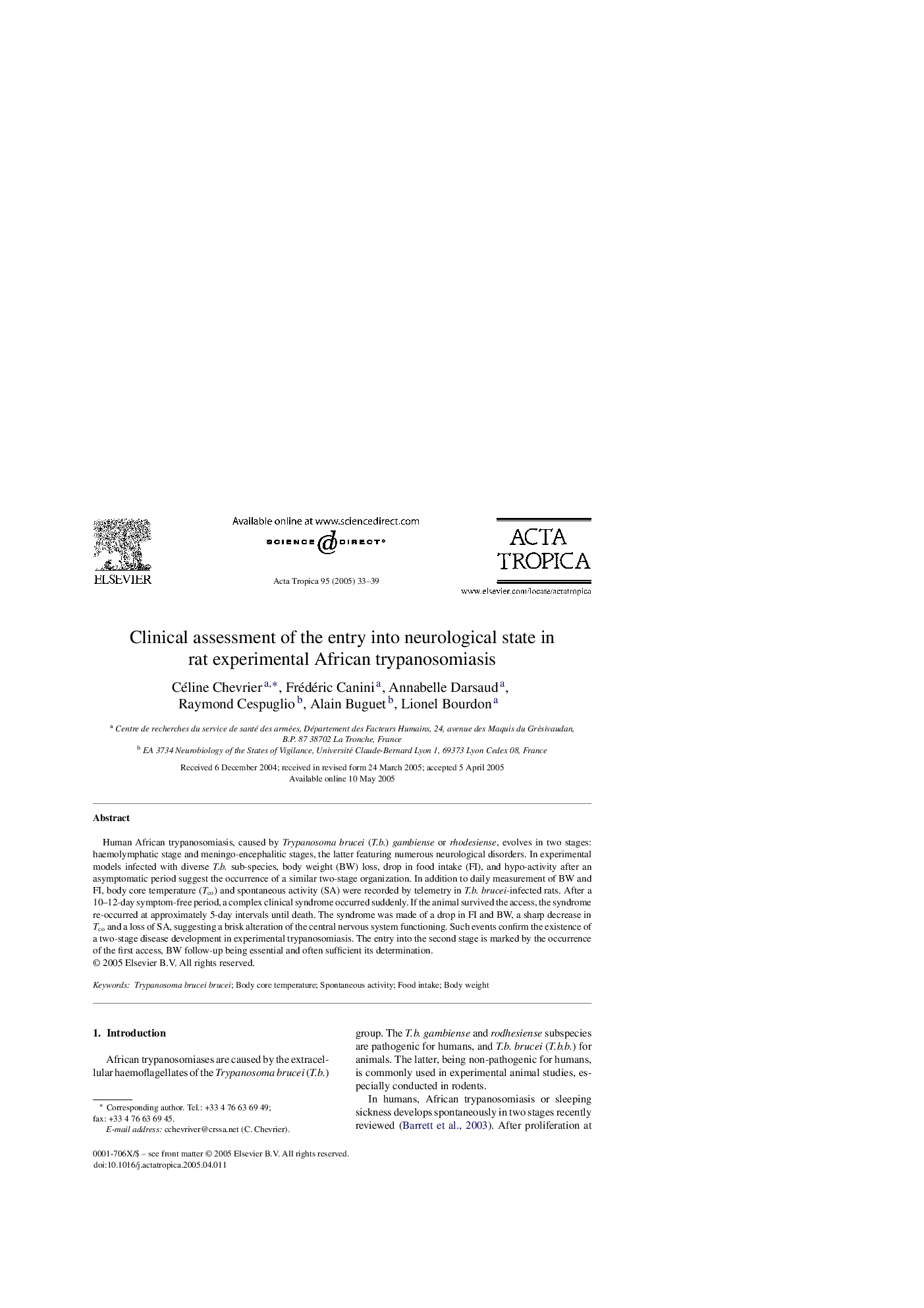| Article ID | Journal | Published Year | Pages | File Type |
|---|---|---|---|---|
| 9274374 | Acta Tropica | 2005 | 7 Pages |
Abstract
Human African trypanosomiasis, caused by Trypanosoma brucei (T.b.) gambiense or rhodesiense, evolves in two stages: haemolymphatic stage and meningo-encephalitic stages, the latter featuring numerous neurological disorders. In experimental models infected with diverse T.b. sub-species, body weight (BW) loss, drop in food intake (FI), and hypo-activity after an asymptomatic period suggest the occurrence of a similar two-stage organization. In addition to daily measurement of BW and FI, body core temperature (Tco) and spontaneous activity (SA) were recorded by telemetry in T.b. brucei-infected rats. After a 10-12-day symptom-free period, a complex clinical syndrome occurred suddenly. If the animal survived the access, the syndrome re-occurred at approximately 5-day intervals until death. The syndrome was made of a drop in FI and BW, a sharp decrease in Tco and a loss of SA, suggesting a brisk alteration of the central nervous system functioning. Such events confirm the existence of a two-stage disease development in experimental trypanosomiasis. The entry into the second stage is marked by the occurrence of the first access, BW follow-up being essential and often sufficient its determination.
Related Topics
Life Sciences
Immunology and Microbiology
Parasitology
Authors
Céline Chevrier, Frédéric Canini, Annabelle Darsaud, Raymond Cespuglio, Alain Buguet, Lionel Bourdon,
